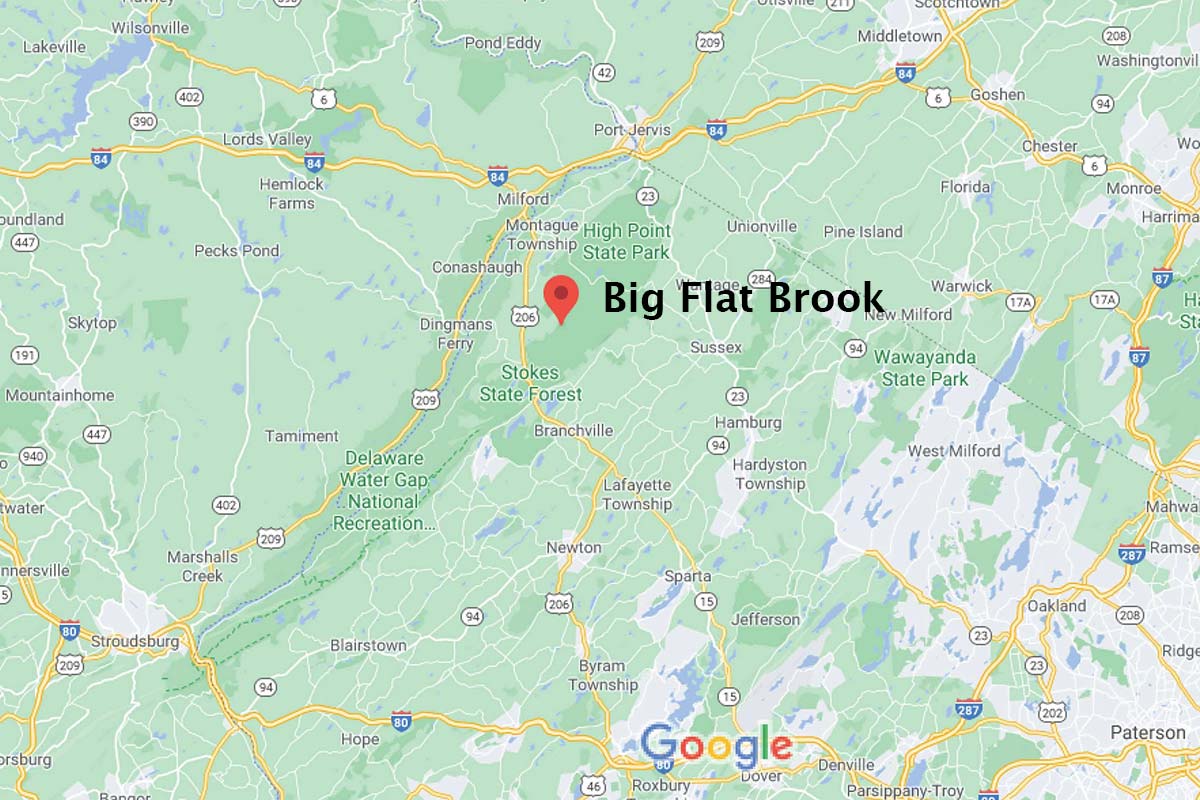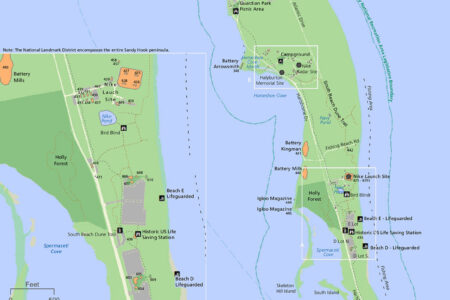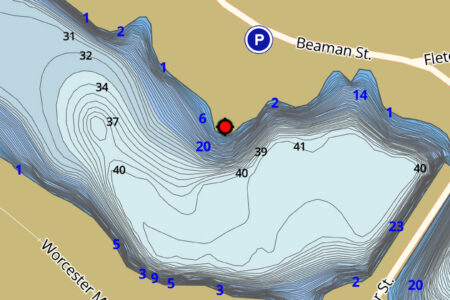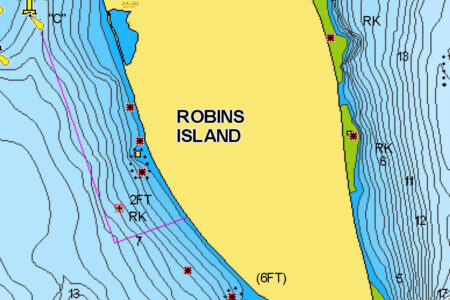The headwaters of New Jersey’s most beautiful trout river begin, simply enough, below the dam at Saw Mill Lake in High Point State Park, where 20-something miles later it meets the Delaware River at Walpack Bend at the hamlet of Flatbrookville. Despite a mere puddle during times of no Saw Mill overflow, the Big Flat Brook is bolstered by springs as it crosses Saw Mill Road 50 yards or so below the dam and then slowly progresses along the right side of Saw Mill Road. It’s then a lost game as it splits, re-forms and splits again through a swamp before forming enough to justify a stocking point at the bottom of Park Ridge Road, approximately 100 yards from where it meets Saw Mill Road.
The brook is enveloped by another spring-fused swamp when it emerges in flow-form along Saw Mill Road. This second stocking point is followed by the “Red Barn Pond” release where Saw Mill Road hits Deckerton Pike. The under-the-road still water outflow once again joins a tendril swamp before melding to a brook with an appreciable flow, this just above the Steam Mill camping area in Stokes State Forest, at the bottom of Sunrise Mountain Road.
It’s a narrow and splintered flow through some bear-there swamps and rills after the Steam Mill Bridge stocking point down to the School of Conservation where the Lake Wapalane outflow drains in, than a wider “pick pocket” scenario to the Double Bridge at the Lake Ocquittunk camping area. Stocking resumes here and continues down to the Route 206 overpass.

No doubt there will be some gorgeous native brookies and wild browns caught if probing and poking from Steam Mill down through the Lake Ocquittunk stretch to the Route 206 overpass. When using bait, we keep to barbless hooks to make releasing much easier and less traumatic.
From this point down 4 miles to the Roy Bridge and then to the confluence with the Delaware River, it’s a wider and more fishing friendly, in the conventional sense, trout river. Sure, there are a few narrow passes, but for the most part, particularly at optimum flows, the swim is rife with robust riffles, deep pools, and intriguing undercut bank sides. It is stocked down the last bridge at Flatbrookville, a few hundred yards before its ingression with the Delaware River at Walpack Bend.
The aforementioned four-mile Route 206-to-Roy Bridge (including the historic Blewett beat) is under “Artificials Only/No Kill” rules. Barbless only, flies included, and no more than three hook points. When plugging this water, we use the likes of the Yo-Zuri Pins Minnow and the Rapala Minnow with the mid-body set of trebles removed and a mashing of the rear barbs. Volunteers from Trout Unlimited assist in the dispersal of the rainbows via float stocking, which is generally done from where the Little Flat Brook joins the big Flat just below Blewett down to the deep hole opposite the Flatbrook-Roy WMA rifle range along Route 615 and just above the Roy Bridge where the No-Kill/Artificials Only rules end.
Save for the No-Kill beat, the daily limit during the spring from the April opener (in ‘21 it’s April 10) until Memorial Day is six fish at a 9-inch minimum; after that, it’s a four fish possession limit with the same length restrictions.
The Big Flat was stocked with 2,180 two-year old rainbows measuring 14-1/2 to 16 inches, in addition to smattering of 3-year old spent breeder ‘bows up to four-plus pounds, on October 8 as part of the Bureau’s fall stocking program. With holdover from the spring stocking program (which, because of COVID 19 precautions was a massive one shot deal in late March) of 34,620 rainbows, the overall quality of the habitat and forage (minnows, sculpin, dace, and a host of aquatic insects, especially stoneflies and caddis) and the species penchant for traveling, the Big Flat offers prime Indian Summer through winter opportunities throughout most of its length, especially for those who choose to get off the beaten path and work the waters far from the known stocking points.
In early November, we enjoy, conditions permitting, using hopper and cricket imitations, sometimes with a nymph dropper, along beats adjacent to fields and with brushy/grassy bank sides. Streamers are also effective, with the varied woolly bugger and matuka patterns getting results. Later into the fall and into January it’s all about bead head Pheasant Tail and Prince, and Copper John nymphs.
No shame to the game when utilizing bait, both live and preserved, where legal, with garlic and shrimp salmon eggs, garden worms, wax worms and fathead minnows the crush. We’ve enjoyed more than a few trout dinners after drifting the likes of white Gulp! Maggot and the cream colored PowerBait Honey Worm, both of which are close imitations of a caddis worm sans its case. Hardware-wise, we opt for small baitfish imitating plugs, as these can be worked various ways at slower speeds than spinners or spoons.




